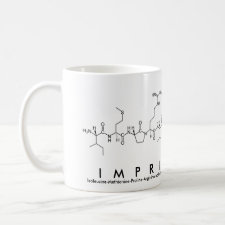
Authors: Yoshida M, Uezu K, Goto M, Furusaki S
Article Title: Surface imprinted polymers recognizing amino acid chirality.
Publication date: 2000
Journal: Journal of Applied Polymer Science
Volume: 78
Issue: (4)
Page numbers: 695-703.
DOI: 10.1002/1097-4628(20001024)78:4<695::AID-APP10>3.0.CO;2-T
Abstract: A highly enantioselective polymer was prepared for the separation of optically active tryptophan methylester by a surface molecular imprinting technique. An organophosphorus compound was found to be effective as a functional host molecule for recognizing the chirality of the amino acid ester. The imprinted polymers exhibited a higher template effect toward the corresponding imprinted tryptophan methylester than its isomer and analogues, while a reference polymer prepared without an imprinting molecule did not show any selectivity toward the enantiomers. The enantioselective recognition was quantitatively evaluated by determination of the binding constants of the D- and L-tryptophan methylester to the imprinted polymers. Furthermore, the mechanism for producing enantioselectivity was deduced from FTIR and H-1-NMR spectra. Based on the results obtained we concluded that the enantiomeric selectivity was mainly caused by electrostatic and hydrogen bonding interactions between the functional organophosphorus molecule and the target tryptophan methylester on the polymer surface. (C) 2000 John Wiley & Sons, Inc



Join the Society for Molecular Imprinting

New items RSS feed
Sign-up for e-mail updates:
Choose between receiving an occasional newsletter or more frequent e-mail alerts.
Click here to go to the sign-up page.
Is your name elemental or peptidic? Enter your name and find out by clicking either of the buttons below!
Other products you may like:
 MIPdatabase
MIPdatabase









